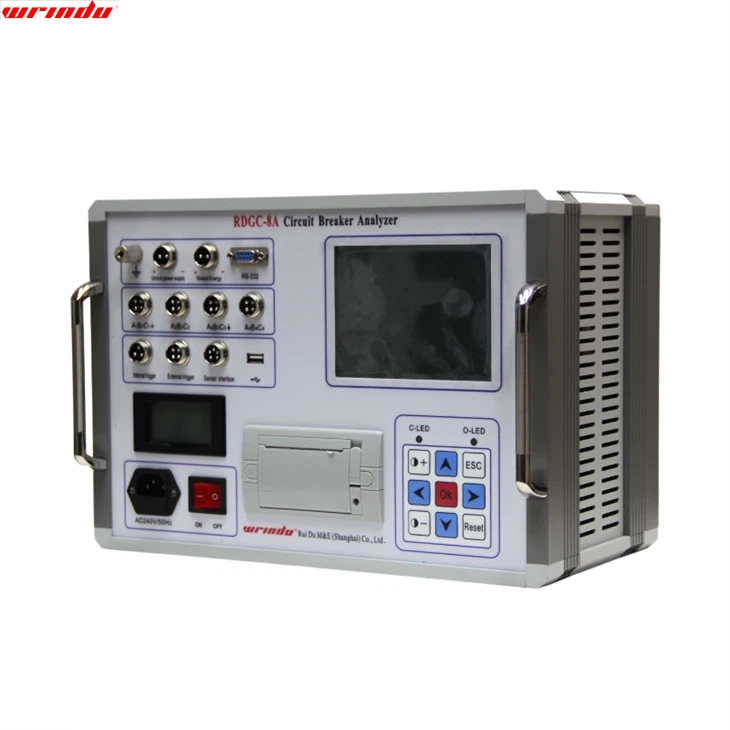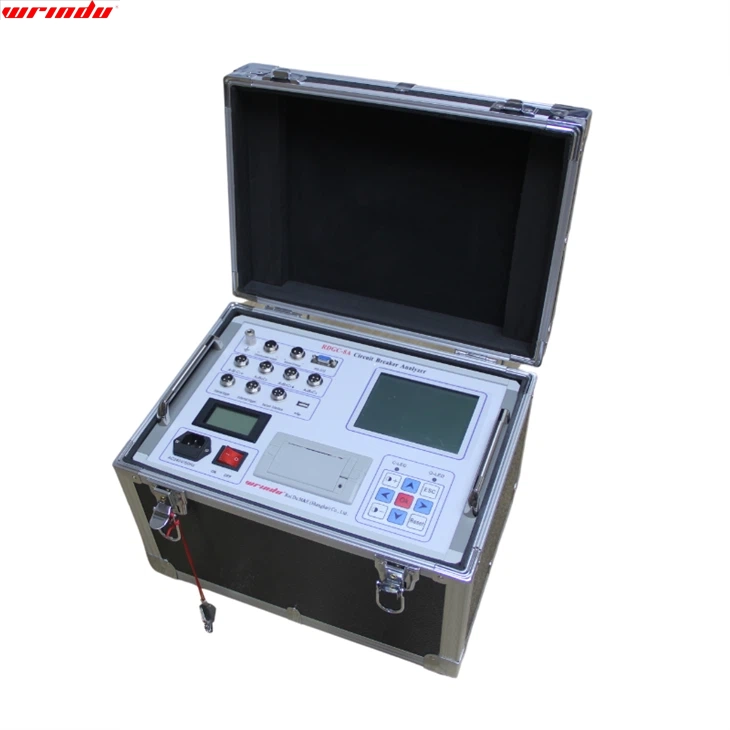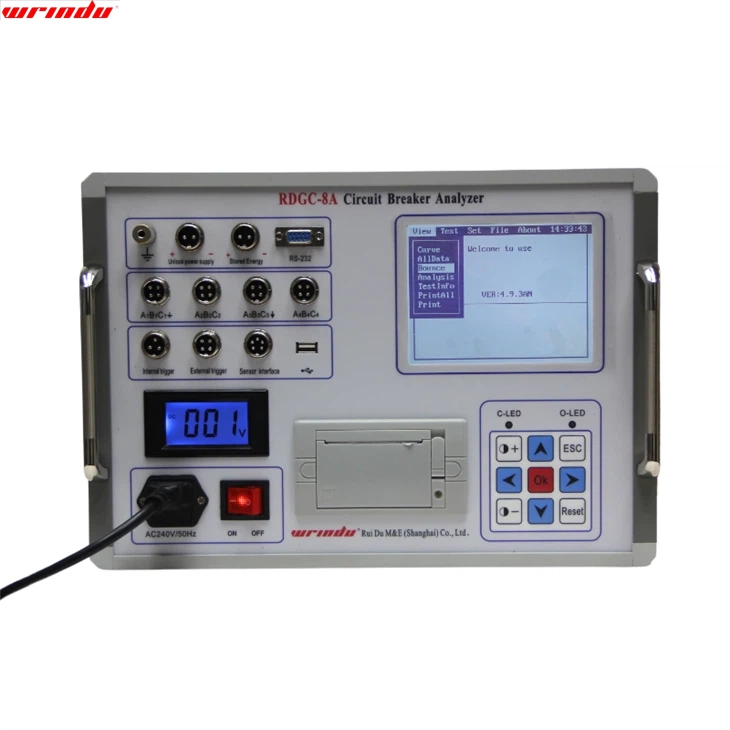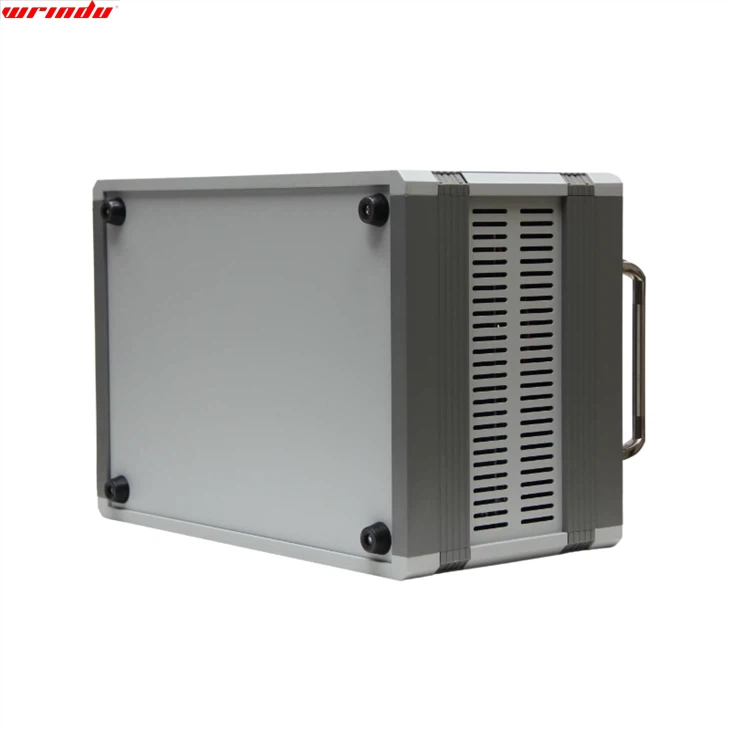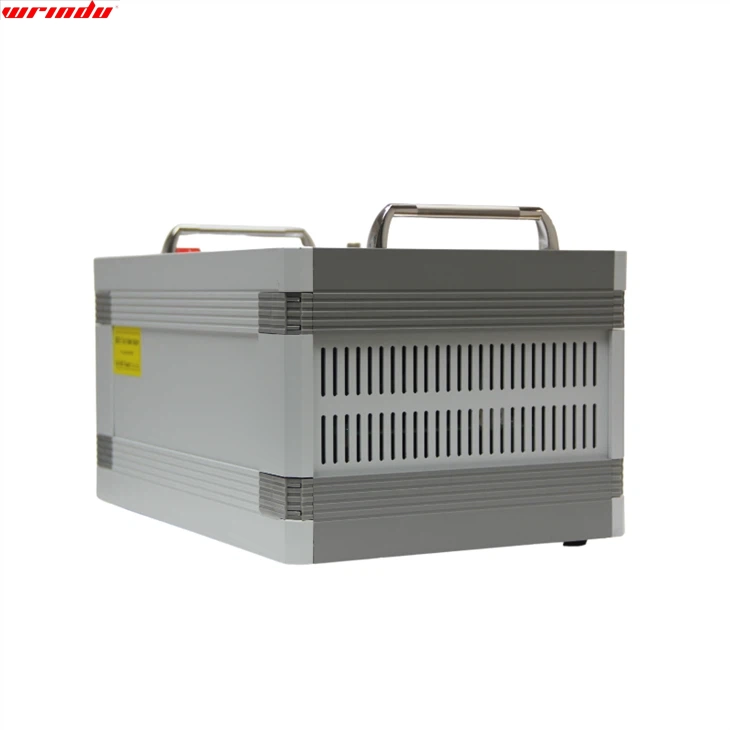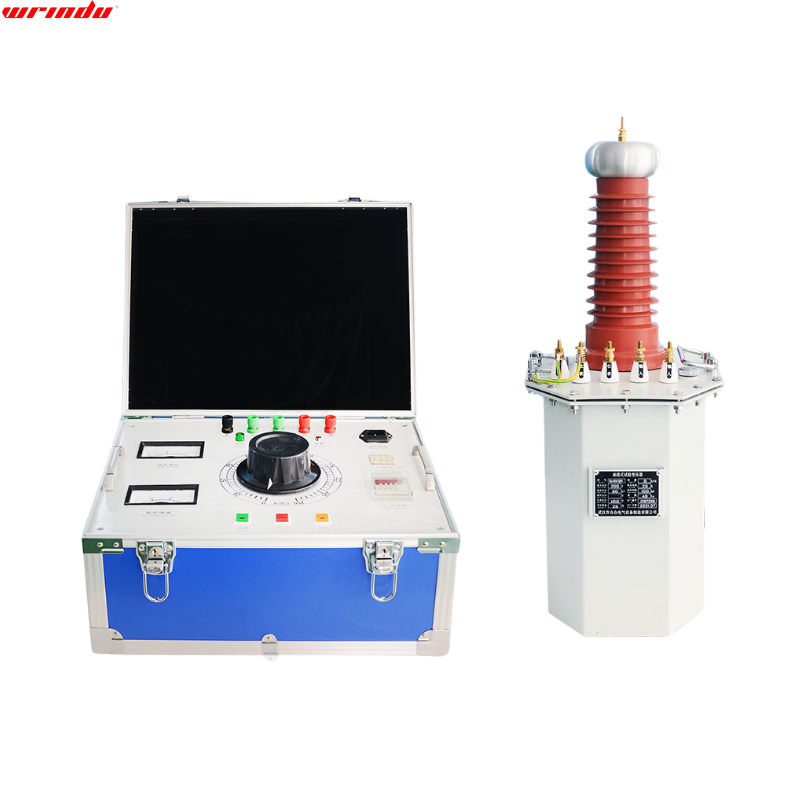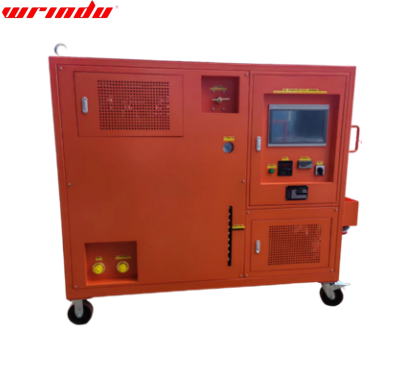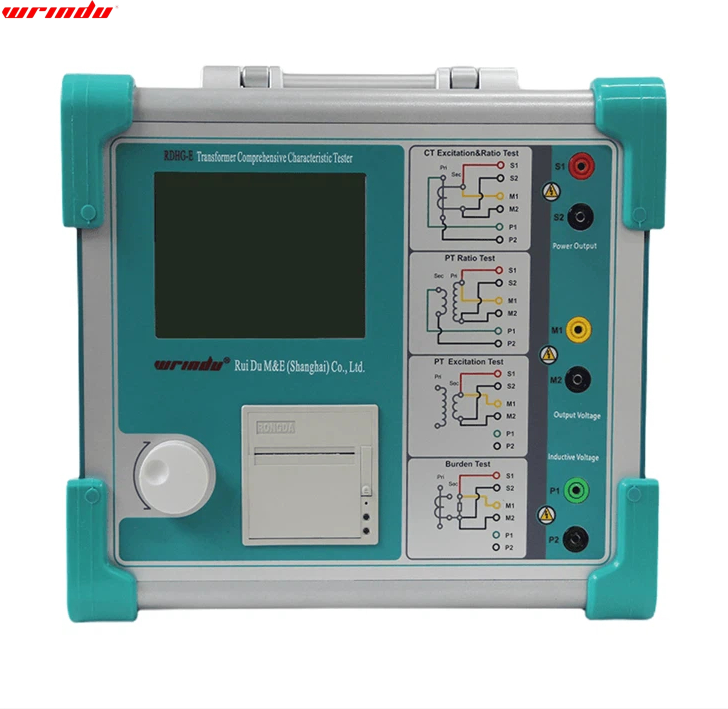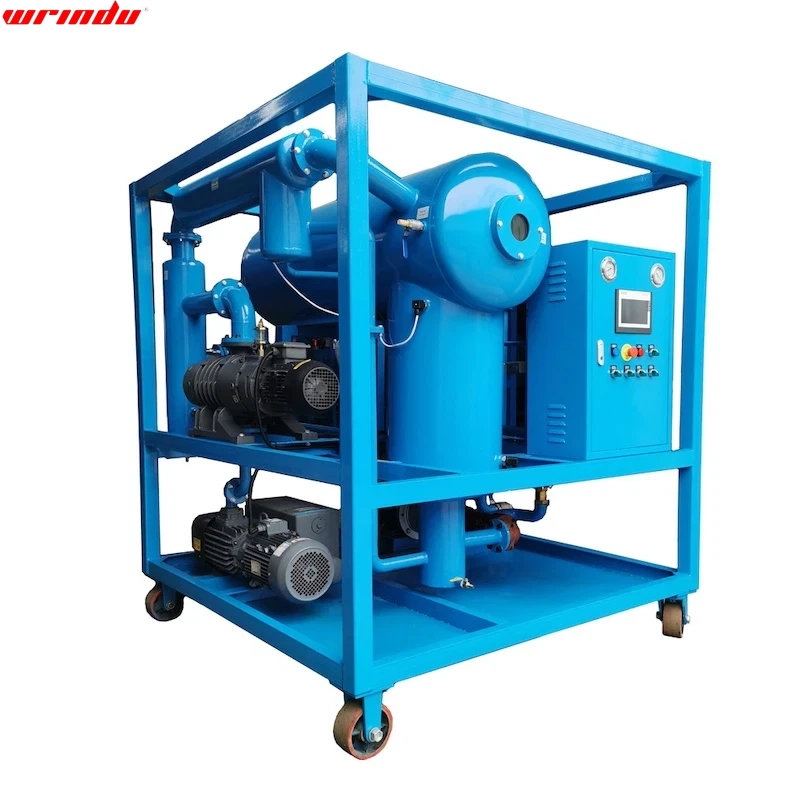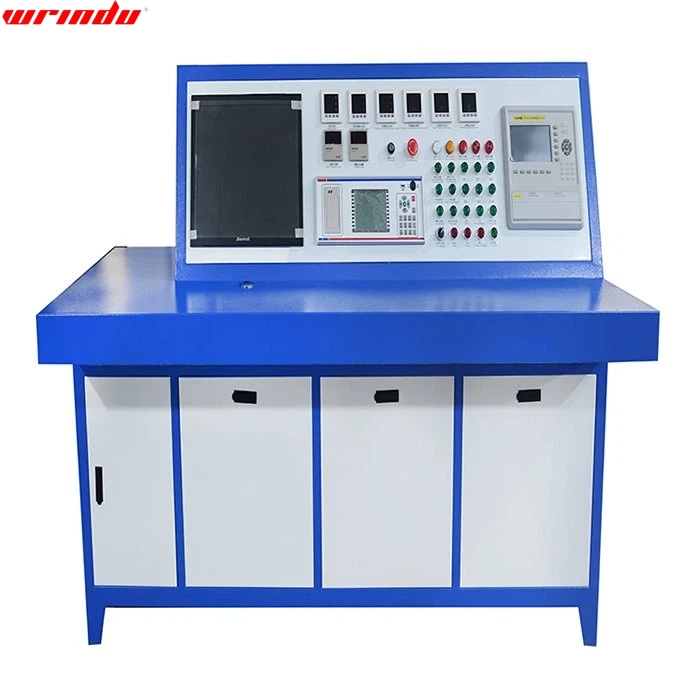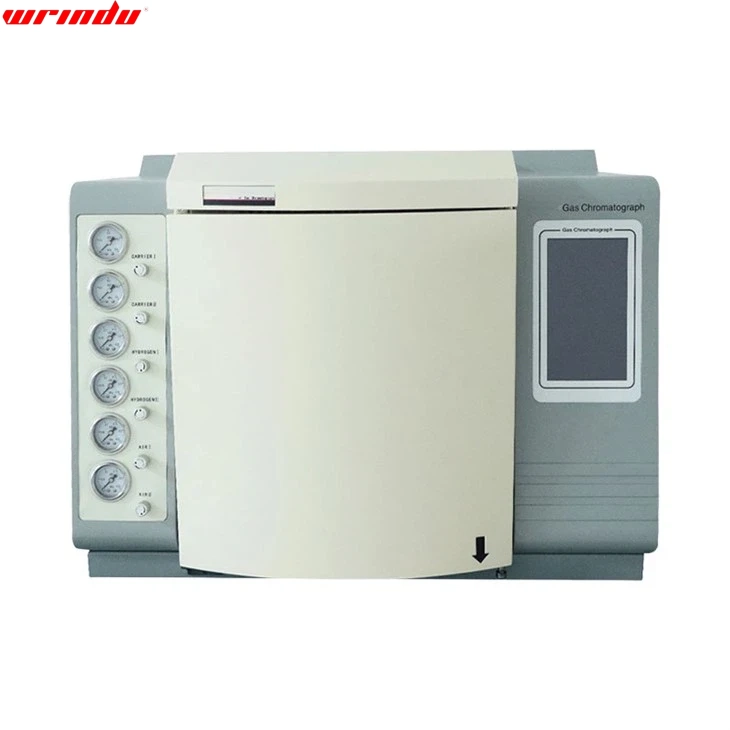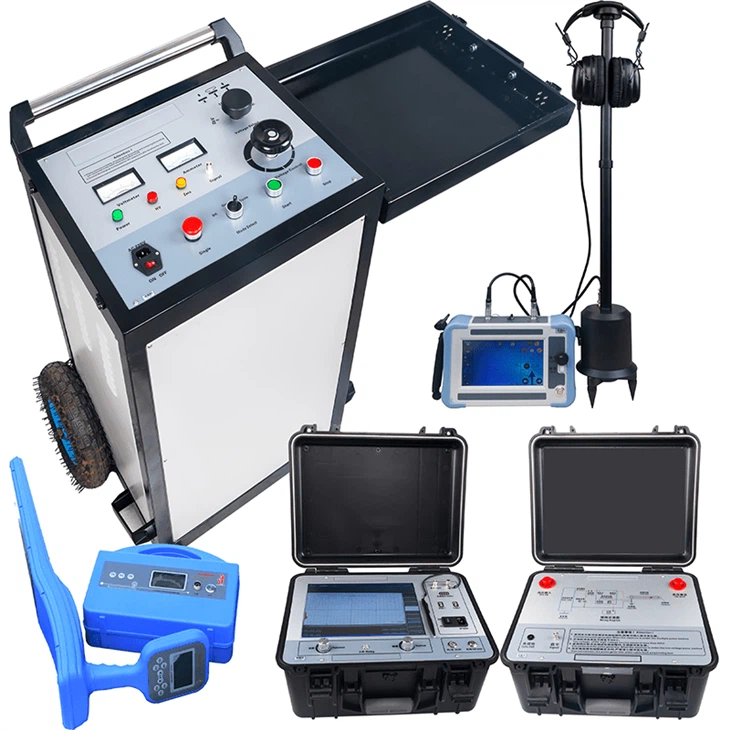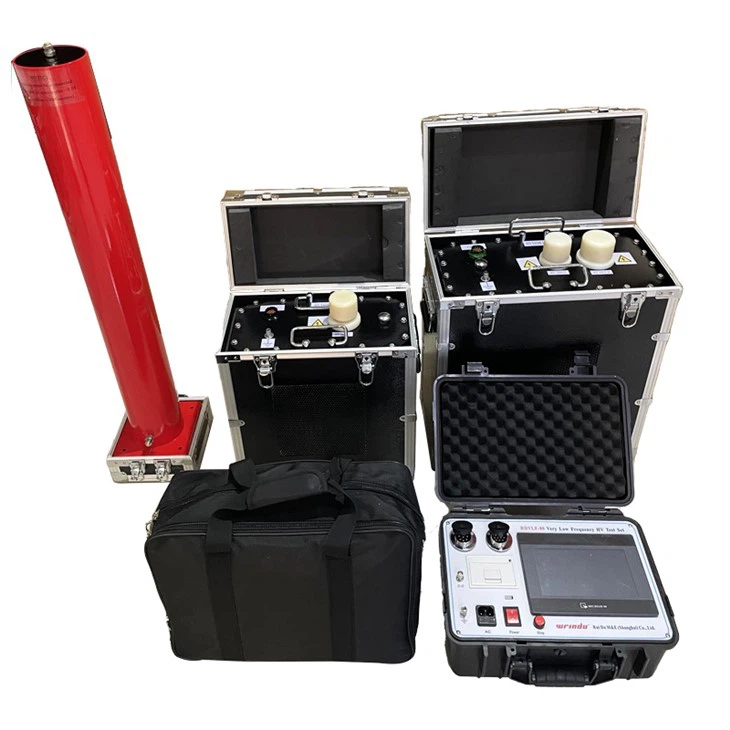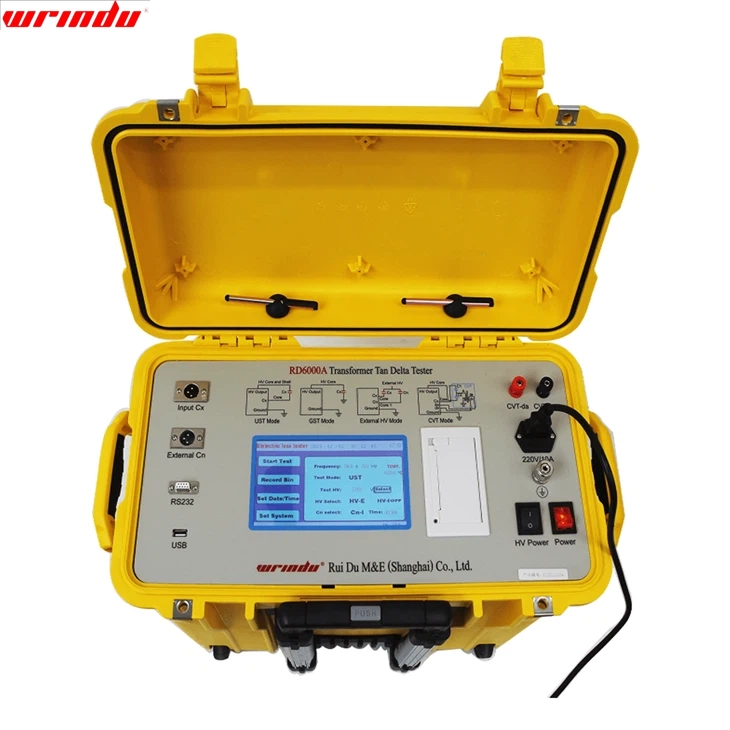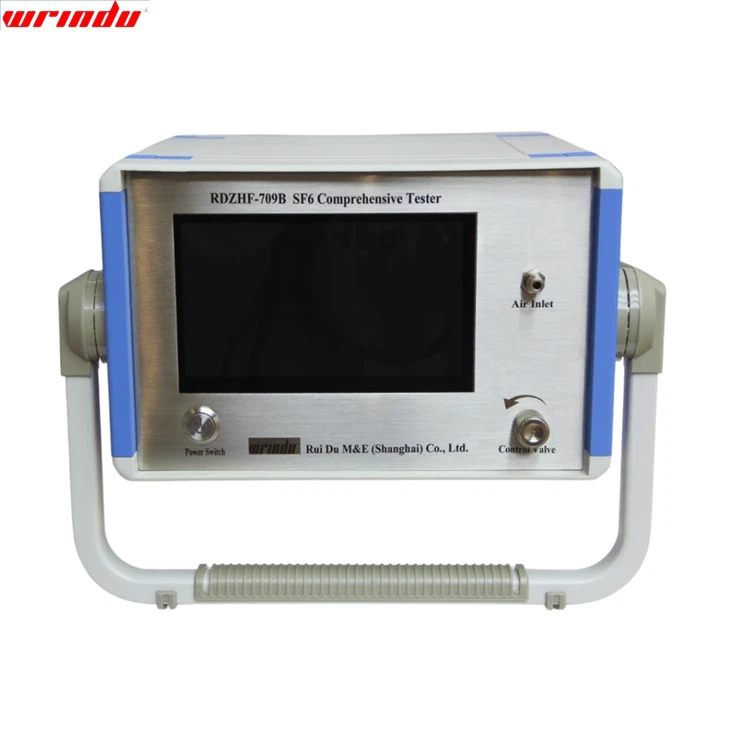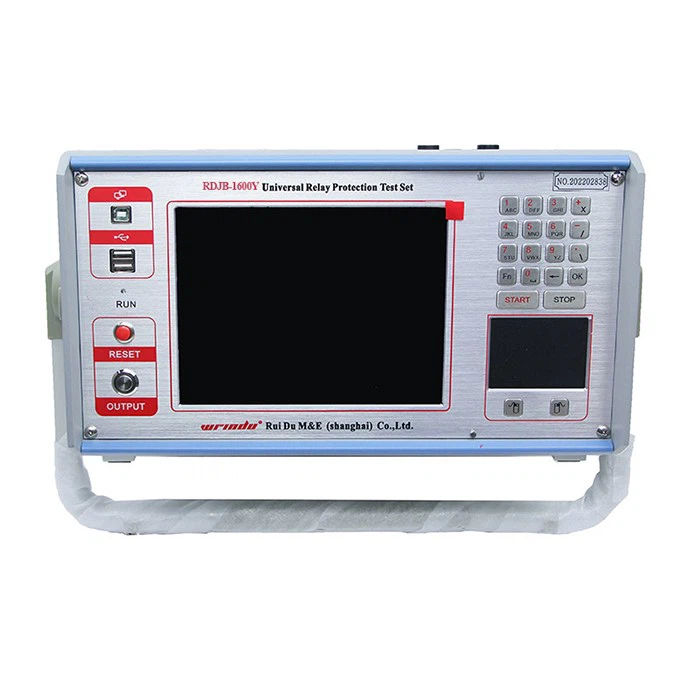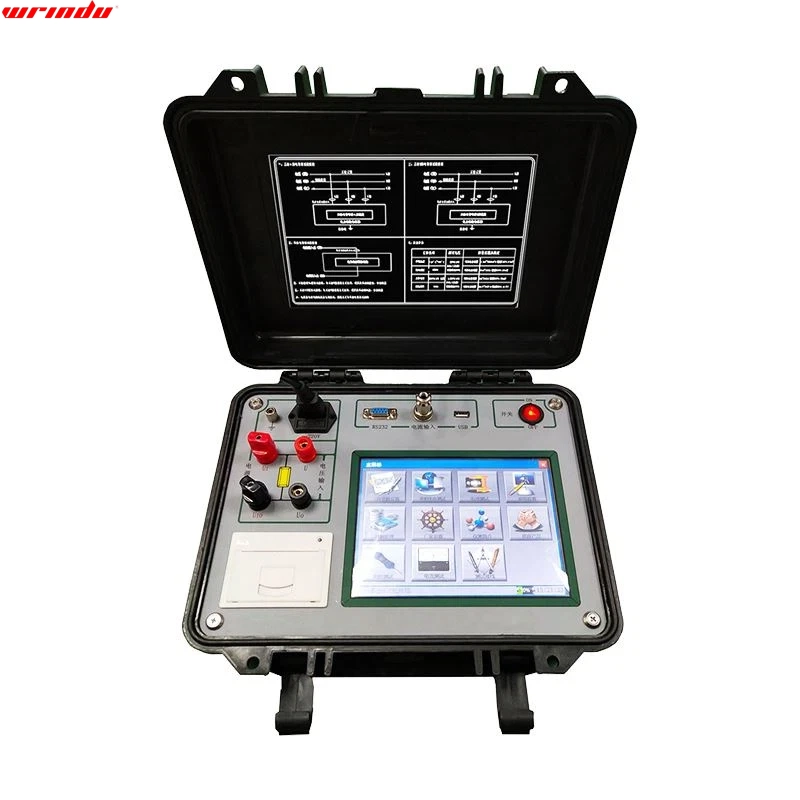OVERVIEW
Contact opening and closing time is an essential indicator for measuring the speed at which a circuit breaker cuts off or connects the circuit.Fast and stable opening and closing time can effectively limit the damage of fault current to the equipment and reduce the scope of accident impact. Synchronicity ensures the consistency of the three – phase circuit during opening and closing operations. It can avoid overvoltage and non – full – phase operation caused by different phases. These issues threaten equipment insulation and system stability.The accuracy of contact travel and overtravel parameters is related to the contact pressure and arc extinguishing performance of the circuit breaker contact, directly affecting its breaking capacity and service life.
This Digital Circuit Breaker Analyzer combines advanced sensor technology, a high-speed data acquisition system, and an accurate algorithm model. It is tailored for dynamic characteristic analysis of various circuit breakers. It has high-precision time measurement capability, with a time resolution of up to 0.1ms, and can accurately capture the subtle time differences in the opening and closing process of the circuit breaker. Regarding travel measurement, a high-precision displacement sensor is used with a measurement accuracy of up to ±0.1mm, which can accurately obtain the travel and overtravel data of the contact. In addition, the tester can also comprehensively and accurately measure the mechanical dynamic characteristic parameters of various types of high-voltage circuit breakers with different voltage levels (such as 10kV, 35kV, 110kV, 220kV, etc.), such as low-oil, high-oil, vacuum, sulfur hexafluoride, etc., providing reliable data support for the operation and maintenance, status assessment and fault diagnosis of the power system.
CHARACTERISTIC
1. Measurable Parameters
- 1. Time: It can provide the inherent opening and closing time of 12 breakers, as well as the phase synchronization and phase – to – phase synchronization time.
- 2. Reclosing: It supports closing-opening, opening-closing, and opening-closing-opening operations for each break and can test the closing and opening time and the current-free interval time.
- 3. Bounce:It can measure the closing bounce time, number of bounces, bounce process, and waveform of each break, and record the opening rebound amplitude of each break.
- 4. Speed: Record the speed of just opening and closing and the maximum speed, and draw the time-travel characteristic curve.
- 5. Travel: Provides detailed data such as total travel, opening distance, overtravel, overshoot travel, and rebound amplitude.
- 6. Current: It can measure the current value, resistance value, and current waveform of the opening and closing coil.
- 7. Action voltage: This device provides a DC0270V/30A adjustable power supply for automatic high-low-voltage action tests. It measures and prints the circuit breaker’s action voltage value.
2. Product Features
- 1. Strong applicability: The Digital Circuit Breaker Analyzer adopts industrial computer architecture and is widely used in various metal contact SF6 switches, GIS combination electrical appliances, vacuum switches, oil switches, pole switches, and contactors produced at home and abroad.
- 2. Sensor: Equipped with acceleration speed sensor, rotation speed sensor, linear travel sensor, and contact sensor, it is simple and convenient to install and quick to operate.
- 3. Various triggering methods: We support internal triggering, external triggering, sensor triggering, and manual triggering. Manual triggering is suitable for manually operated switches without opening and closing coils (such as manual switches on poles). Sensor triggering is mainly used in special-demand places such as switch factories.
- 4. Energy storage output: The instrument can provide an adjustable DC energy storage power supply. Once the wiring is completed, the motor energy storage can be controlled without rewiring.
- 5. Display function: Equipped with a large screen, direct-transmitting wide temperature band backlight LCD, supporting electronic contrast adjustment. Complete menu prompt operation, automatically display all relevant data and waveform graphs after the switch is actuated.
- 6. Data storage: The central unit can store 1,000 sets of closing test results, and the built-in real-time clock is convenient for archiving and saving test dates and times. The USB interface supports data transfer and program upgrades.
- 7. Data analysis and printing: The Digital Circuit Breaker Analyzer has powerful data analysis functions and can efficiently analyze various parameters of the mechanical characteristics of the circuit breaker. The built-in fast micro printer can print all data and graphs.
For more information about circuit breaker testing equipment, please click More.
To request the latest quotes, please click Contact Us.
FAQ
Q: What is the function of a circuit breaker analyzer?
A: A circuit breaker analyzer tests and analyzes circuit breaker performance in electrical systems, including timing, contact resistance, motion, coil and motor current, minimum pickup voltage, travel, sensitivity and stability tests, and energy storage capacity assessment.
Q: How are circuit breakers measured?
A: Circuit breakers are measured through methods such as using a circuit breaker analyzer to test parameters like contact opening and closing time, contact resistance, and mechanical motion characteristics. The current rating indicates the maximum current the breaker can safely handle without tripping, while the voltage rating specifies the maximum voltage the breaker can interrupt. Additionally, circuit breakers may be classified based on their trip characteristics, such as thermal or magnetic, indicating how they respond to different types of overcurrent conditions.
Q: What is the standard for breaker testing?
A: Breaker testing standards mainly include international standards like the IEC 62271 series. These standards specify requirements for various performance aspects such as electrical and mechanical characteristics, insulation levels, and operating conditions during testing. The rated current indicates the maximum current the breaker can safely handle, while the voltage level specifies the maximum voltage it can interrupt. Additionally, breaker testing must comply with international standards, such as the IEC 62271 series, to ensure their performance and safety under various conditions.
DETAILS






